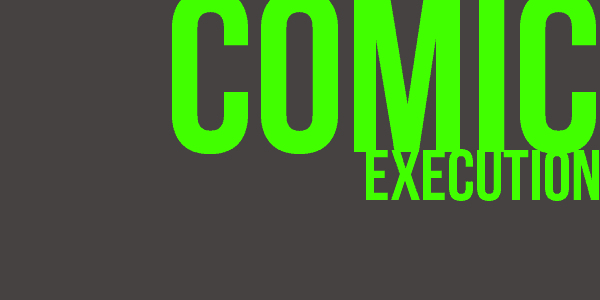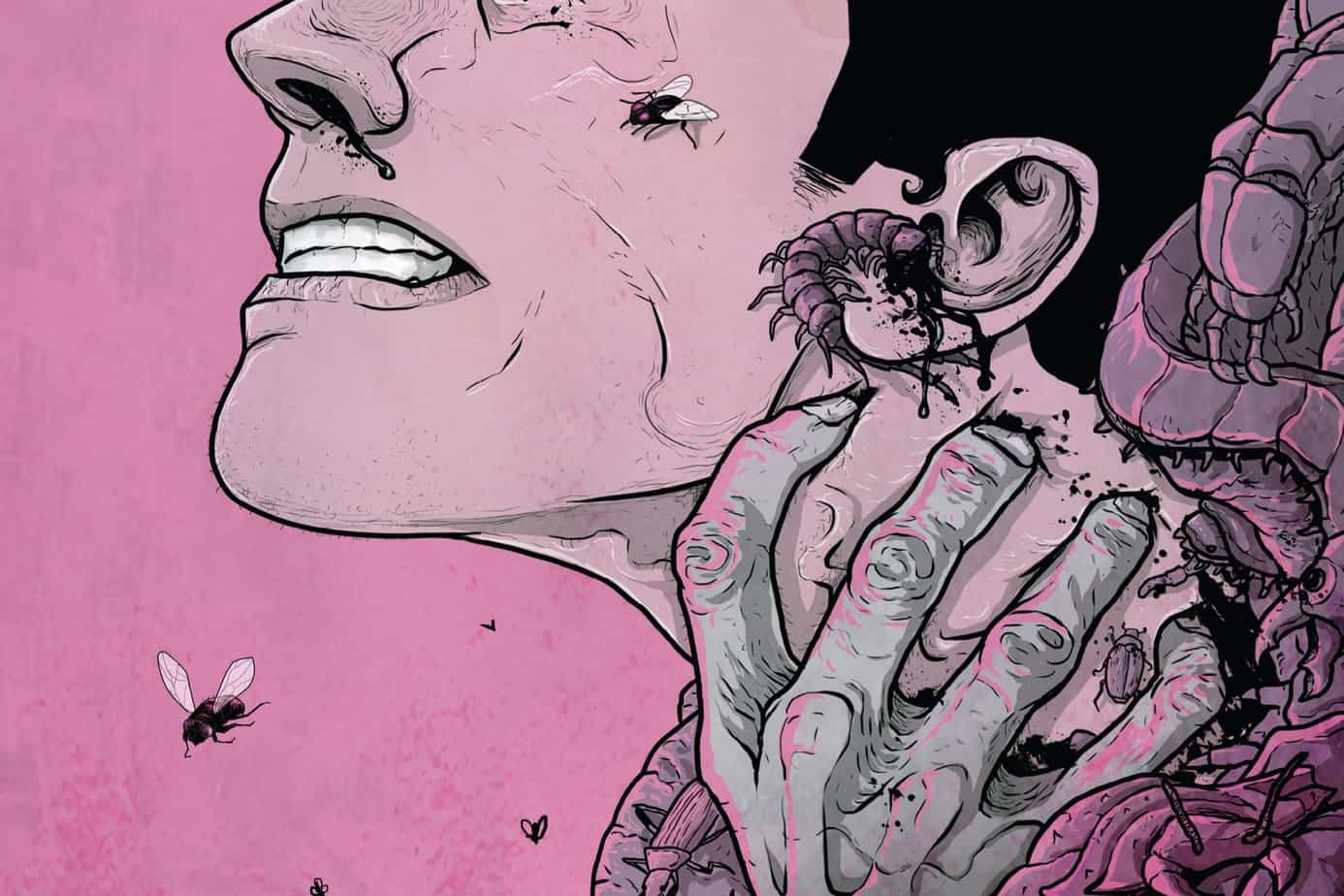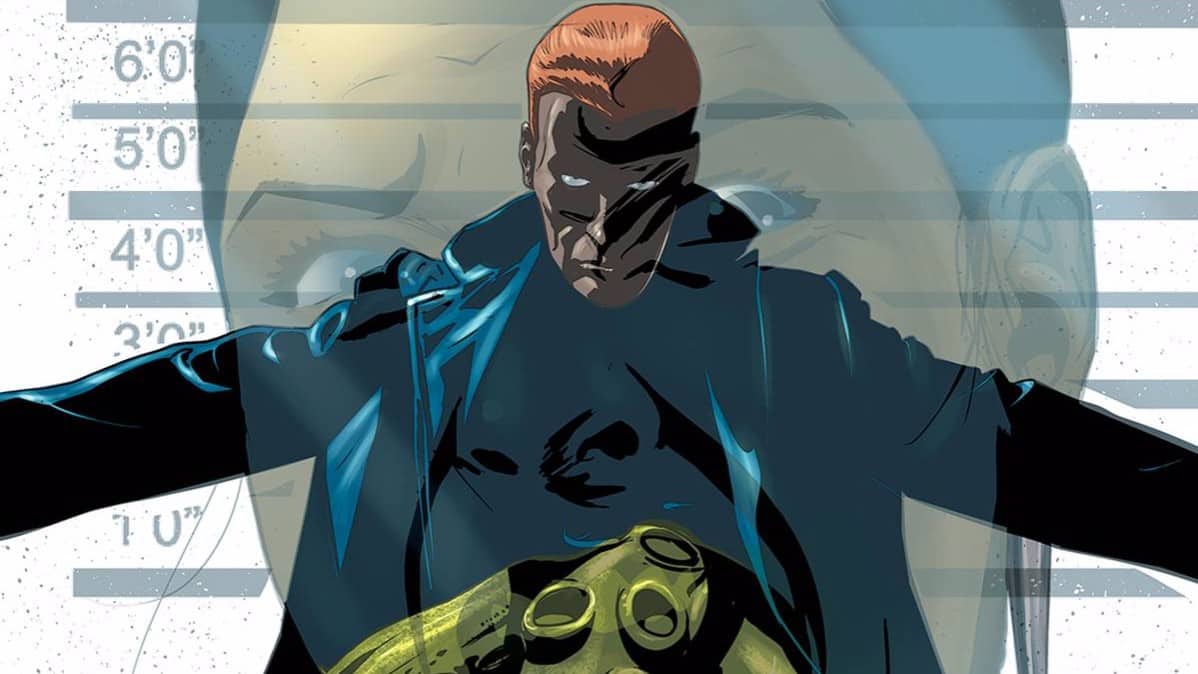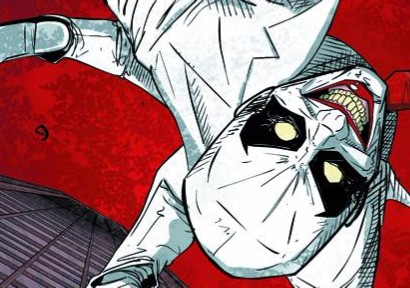
[Comic Execution] 6/13 – ‘THE EMPTY MAN’, ‘NIGHT TERROR’, ‘MORELLA AND THE MURDERS…’
I’m very excited about the recent growth of comic book creators in the Midwest and in the Saint Louis region in particular. Creators Jim Mahfood, Cullen Bunn and Matt Kindt have established themselves in the industry and have gained quite a following but still show up at local events every year and their diversity will hopefully show that anyone can make comics. And hopefully, next year, we’ll have two comic book conventions where aspiring creators can talk to and learn from both national and local creators. Personally, I think it’s a great time to be into comics, especially with the world of digital distribution making it easier to get your work out there independently.
 THE EMPTY MAN #1
THE EMPTY MAN #1
Writer: Cullen Bunn
Artist: Vanesa R. Del Rey
Colorist: Michael Garland
Publisher: BOOM! Studios
Price: $4 (digital)
So I kind of feel terrible about what happened with local writer Cullen Bunn’s previous comic series THE REMAINS. I reviewed the first issue for this column, enjoyed it, then totally dropped the ball on following up with a review of the second issue, which is kind of a problem with the format of this column, because if I miss reviewing an issue, I can’t really play catch up. So I’m really glad that he’s launched another horror comic, this time with BOOM! Studios and artist Vanessa R Del Rey, best known for her BOOM! crime drama ‘HIT.’ I’m a bit wary of the premise, relying on the oversaturated “plague” horror genre, I know Bunn can do more with it.
He quite cleverly does just so from the start by letting us watch the televising of one unusual evangelist’s sermon and Bunn masterfully evokes those types without condescending or depicting him as maudlin. I feel like Bunn might have been paying attention to the wonderful performance of the excellent Shea Whigham in ‘True Detective’ as Preacher Joel Theriot but I also know Bunn grew up in the Midwest (and still lives here) so he’s just as personally familiar with their act (if you’ll pardon the phrase) as anyone around here would be. What’s interesting is that it’s not the preacher’s sermon that establishes the book’s eerie tone, and in fact, the character is even more delicately handled than any depiction I’ve witnessed before. No, it’s a different character entirely who puts the reader at unease, an unexpected source. So, from the first scene, Bunn takes a cliche and breathes new life into it.
Then he brings down the hammer and shows us his plague, skillfully transitioning to a genuinely unsettling bit of body horror, giving us just a glimpse of the horror that is THE EMPTY MAN. Our protagonists arrive on the scene and immediately charm the pants off me by being both part of the glorious buddy cop tradition while utterly smashing that stereotype; Jensen, a regal and commanding black woman backed up by a coarse, weathered older man named Langford who I assume is mixed race. The locals reactions to them is also nicely toned down, reflecting just how disturbed the residents have become by the proliferation of the ‘Empty Man’ disease that they’re more concerned with it than the racially diverse detectives interviewing them, though this part also takes place in Atlanta so there’s that to consider. The way this both moves the plot and further establishes the tensions of the setting is remarkable.
But Bunn knows that this is a horror comic and there needs to be action to balance out exposition, so we get to witness just how awesome Jensen even as there’s some foreboding stuff hinted at during this part. Bunn does resort to some dense but necessary exposition via internal monologue but quickly switches that out for some EXCELLENT micro-freak outs, stuff that is both delightfully twisted yet hit uncomfortably close to home. Without giving too much away, the tale ends on a perfectly sinister note, punctuating an excellently crafted riff on the current horror craze.
Bunn finds a fantastic partner in Vanessa R Del Rey, whose work I’ve never encountered before. I don’t know if it’s her style or just an affectation she adopted for THE EMPTY MAN but her linework here is so dark, textured, atmospheric and tense yet there’s rarely a lost detail or stray note. Her characters are expressive but still real enough to connect with, helping balance the realism of the tale. She knows what to infuse into each panel to get the right reaction; turning the hazmat-suited crime scene cleaners into ominous silhouettes is just one of many brilliant touches. The backgrounds do a good job of grounding each panel in the continuity of the narrative but are even more effective at conveying mood. The panels are basic, stock and don’t do much to enhance the story but their generosity also offsets that. She teams up with colorist Michael Garland to deepen the cinematic, gritty tale. He equips Vanessa’s lines with eloquent hues, filling pages with rich gold colors that darken into ominous shades. His blood reds have a dried, sticky feel that really amps up the horror scenes and he splatters it across panels generously. Between him and Vanessa, this book is one of the most unnerving horror books I’ve read in a long while. Letterer Ed Dukeshire also delivers immersive FX that fit perfectly into the material, keeping a low-profile but assisting capably in conveying non-visual info with distinctive, evocative lettering.
I cannot recommend this book enough for horror fans. It’s actually scary. It is a $4 book but I promise, you’ll be hard pressed to actually get anything on the shelves right now that will deliver such an unforgettably terrifying experience.
MORELLA AND THE MURDERS IN THE RUE MORGUE 
Writer: Richard Corben
Artist: Richard Corben
Publisher: Dark Horse Comics
Price: $4
So I’ve been a naughty boy. I had planned on covering all of the one-shot Edgar Allan Poe comics from Richard Corben released by Dark Horse but I missed one! And what’s worse, I BOUGHT AND READ IT. It was great. That’s a terrible thing for me to say because now that it’s been on shelves for nearly two months, you might have some problems getting to it. And, maybe more importantly, this is the third issue in this “one-shot” series and, had I reviewed the previous book, this would be the point in the series where I’d shit or get off the pot. That being said, since this is a series of “one-shots,” I’m going to treat it as such and look at each issue individually.
With this volume of Corben’s Edgar Allan Poe adaptations, he mines a little deeper this time around, exhuming yet another a riff on dead lovers returned as an appetizer to the main course, a better known piece that is famous for setting the groundwork of much of Robert Louis Stevenson and Arthur Conan Doyle’s crime procedurals, though Poe crafts a far more grisly yarn than either of them ever contemplated. Corben, as usual, does his best to retain the compelling core of Poe’s tales while transcending the shackles of prose (oh, calm down, literary dweebs). By once again inserting Mag the Hag into the tales, Corben suggests that he’s taking the low road and, with the MORELLA story, that’s a wise move, as his rendition is considerably more maudlin than Poe’s, making Morella herself into a bit of an absurd character. I love the nod to Lovecraft at the beginning, as well as the multiple moments of black comedy. It definitely feels like this is Corben acknowledging some of the inherent silliness of Poe’s work here. Wisely.
But this tactic is entirely discarded with THE MURDERS IN THE RUE MORGUE; Mag’s opening reaction is quite clearly a nod at how much grittier the source material is. By playing the tale straight, Corben introduces his readers, likely some unexposed to this singular Poe creation, to what is essentially the prototype of all detective fiction. Unlike his forebears in the genre, Poe didn’t have the knack for procedural drudgery, so the tale itself actually suits the comic format quite well, taut suspense built-in. By rhythmically pacing the unfolding of events in synchronization with the visual narrative, Corben does what many filmmakers fail to do with Poe’s work, which is distill the morbid allure of the material to a more immediate form.
Naturally, this is all skeleton bearing the meaty, fleshy corpus of Corben’s art. Before any discussion of the lineart and coloring, I want to bring up the topics of panels and lettering. Nate Piekos, of Blambot, has been responsible for the lettering with each of these Corben adaptations, and it’s easily some of the most high-quality work I’ve ever seen from a letterer. There’s the generous range of hues in which his lettering manifests, from slime greens to nauseating crimson. Beneath that layer is his texture work, again exercising some eye-pleasing jaggedness of varying, subtle degrees. The foundation of its excellence is the dynamic page placement, each appearance a note in a very creepy song, timed and arranged to amplify the action it accompanies.
This contrasts with the mundane panel arrangements. The MORELLA short does have a couple of pages that feature expressive overlaps and this peaks with the opening page of THE MURDERS IN THE RUE MORGUE but there’s nary a sign of life in the panel work until the climax. This does make a certain amount of sense, as the tale is a procedural one and, by staying restrained throughout, it decompresses explosively in the finale. So while it’s hard to necessarily fault the monotone panelwork, I do wish it was a little more creative.
I couldn’t wish for better art itself, though. Corben has the amazing ability to pack details into places right where they should be while slipping aside that depth for moments where simplicity is appreciated. More impressively, he can take straightforward panels and creatively ground the visual elements to make that space seem much bigger. This is partially due to his range but also his concrete consistency across POVs. His massive coloring just doesn’t even seem possible for one person to do, honestly; the depth, the blend of lurid tones, gritty splashes of dullness… There’s a reason anyone who works in comics knows Corben’s name and it’s a shame he’s not household like McFarlane or Crumb.
If you like horror at all, you should go get this. If you like comics, you should go get this. If you like Poe’s stories, you should go get this. It’s a $4 comic, which is a premium price, but this is one of the most rewarding comics you can get for that money. And if that’s too much, wait a few months and get it digitally for two measly bucks. I promise, you won’t regret it.
 VINCENT PRICE: NIGHT TERROR #2
VINCENT PRICE: NIGHT TERROR #2
Writer: CW Cooke
Artist: Jill Lamarina
Publisher: Bluewater Productions
Price: $3 (Digital)
Before proceeding with this review (if it can be called that), let me state that, if the creators of this comic happen upon this article, I hope they take it more as a form of comedy than a real critical examination of their comic. Because, to be honest, I only got about five pages into the comic before I’d made up my mind not to take it seriously. It wasn’t even a voluntary reaction; I just, in my gut, realized I would feel terrible having to say the really horrible things I wanted to say about the comic with any grain of honesty. So, with that said, everything from here on out should be dismissed entirely if you are, in fact, CW Cooke and Jill Lamarina.
Hey, remember that comic, FATALE? The one that mixed pulpy noir with Lovecraft? Okay, so, this comic is kind of like that, except instead of making sense, no. Which, I mean, if you’re trying to evoke the existential dissonance that comes with the ultimate realization that the universe doesn’t fit neatly into human-based rationale, I guess you could justify the careless, meandering, inaccessible, cliche-riddled plot as an act of psychic terrorism but if that’s the case, someone didn’t try very hard at all. TERRORISM FAIL. Reading the first few pages brings on this cold, heavy dread similar to when you go to login to your bank account after spending way too much money. It’s like, part of you is going “oh come one how bad can it possible be” while the rational part of you is going “ABORT ABORT REPEAT MISSION ABORT.” It only gets worse, though, as the stale dialogue and awkward exposition drags you deeper into a choking fog of nonsense. Still, though, you can fathom a possible explanation that ties it all together, that shifts the entire narrative into a different spectrum, triggering a paradigmatic shift in your thought patterns and revealing the intricately subversive tale hiding beneath the poorly timed twists and frustratingly vague character introductions (or, rather, lack thereof).
Then you reach the climax of the tale and the story just reaches into some unfortunate, malignant crevice to withdraw a mutated, grotesque imitation of what Lovecraft had perfected in his works. It’s not beautifully horrible, it’s just atrocious. All those promises, all that time you wasted wondering how it was all going to work together to bring a glorious darkness to life and, instead, it’s like the pages just ran out, SO HERE’S CTHULHU. Which would kind of be awesome if it was put into the kind of hip meta-context that Alan Moore managed with ‘Neonomicon’ but here, it’s literally just “Uh hey so it was Lovecraft all along thanks guys have a nice night.”
Maybe the story’s not so bad. I’m not sure I’d know if it was because it’s nearly impossible to invest in it when you’re staring down the kind of art you usually find saturating the goth tag on Deviantart. I have to wonder how old the artist is, because the art is so generally ineffective and sloppy and full of bad decisions that I can only hope they never paid for a degree and this was the result. Proportions are just in line enough to not be openly offensive but staring at any panel for too long is an exercise in masochism. I can’t tell if all the art feels skewed in one direction because it’s supposed to convey depth or if it’s just a result of the wobbly lineart. So many objects are either hilariously small or puzzlingly oversized. The whole thing feels just unstable, as though the art was hastily assembled and could collapse in on itself just as easily.
This is not even close to a $3 comic. It MIGHT be worth a buck, because there are some panels that are suitably atmospheric and the story tries hard to do justice to Lovecraft (even if it fails pretty spectacularly). But paying $3 to read this is not a mistake anyone should be allowed to make. However, because the first issue was so good, I’m going to give this series a second chance. But please, Bluewater Productions, think about what kind of product Vincent Price would want his name on.



